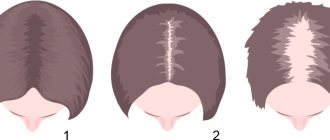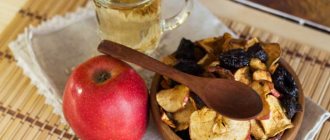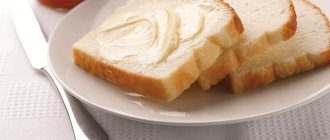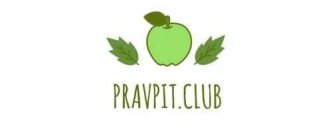The benefits of salt
Content:
- The benefits of salt
- The essence and rules of a salt-free diet
- Prohibited Products
- Authorized Products
- Japanese salt-free diet
- Salt-free diet for 15 days
- Salt-free diet for 4 days
- Salt-free diet for pregnant women
- Salt-free rice diet
- Results and harm of a salt-free diet
- Salt-free diet recipes
- conclusions
Salt is vital for the normal functioning of the body, the stable functioning of all its important organs and systems. Therefore, complete abstinence from salt is simply impossible. Otherwise, this can lead to unpleasant consequences, because salt is necessary for the proper production of insulin, as it is capable of breaking down glucose. It helps to relax the muscles, which is necessary for their constant work. Salt promotes the rapid digestion of food and the breakdown of food, since thanks to it, hydrochloric acid is produced in the human body. That is, it is with the help of salt that all useful substances, vitamins, macro- and microelements enter the blood. Thus, it turns out that salt is really good for the body, but only in small quantities.
Eating food without salt for a long time can lead to serious diseases such as anorexia and osteoporosis. It will cause metabolic disorders and nervous system disorders, which can result in depression or other mental illnesses.
Fully or partially limited products
Of course, the biggest ban on this diet is salt and everything that contains it: canned food, pickles, confectionery, purchased ready-made food, smoked meats, sausages, semi-finished products, sauces. Salt is added almost everywhere to extend shelf life. We ourselves don’t notice how, by seasoning our food with ketchup or eating pickled tomatoes and cucumbers at dinner, we exceed our daily salt allowance many times over.
In addition, it is worth giving up alcohol, as it always entails the consumption of snacks that may contradict the diet.
Table of prohibited products
| Proteins, g | Fats, g | Carbohydrates, g | Calories, kcal | |
Vegetables and greens | ||||
| potato | 2,0 | 0,4 | 18,1 | 80 |
| corn | 3,5 | 2,8 | 15,6 | 101 |
Cereals and porridges | ||||
| white rice | 6,7 | 0,7 | 78,9 | 344 |
Flour and pasta | ||||
| wheat flour | 9,2 | 1,2 | 74,9 | 342 |
| premium pasta | 10,4 | 1,1 | 69,7 | 337 |
Bakery products | ||||
| sliced loaf | 7,5 | 2,9 | 50,9 | 264 |
| wheat bread | 8,1 | 1,0 | 48,8 | 242 |
Confectionery | ||||
| candies | 4,3 | 19,8 | 67,5 | 453 |
| cookie | 7,5 | 11,8 | 74,9 | 417 |
Ice cream | ||||
| ice cream | 3,7 | 6,9 | 22,1 | 189 |
Raw materials and seasonings | ||||
| ketchup | 1,8 | 1,0 | 22,2 | 93 |
| mayonnaise | 2,4 | 67,0 | 3,9 | 627 |
| salt | 0,0 | 0,0 | 0,0 | — |
Dairy | ||||
| yogurt miracle | 2,8 | 2,4 | 14,5 | 91 |
Cheeses and cottage cheese | ||||
| curd mass with raisins | 6,8 | 21,6 | 29,9 | 343 |
Meat products | ||||
| pork | 16,0 | 21,6 | 0,0 | 259 |
| salo | 2,4 | 89,0 | 0,0 | 797 |
| mutton | 15,6 | 16,3 | 0,0 | 209 |
Sausages | ||||
| boiled sausage | 13,7 | 22,8 | 0,0 | 260 |
| smoked sausage | 28,2 | 27,5 | 0,0 | 360 |
| sausages | 10,1 | 31,6 | 1,9 | 332 |
| sausages | 12,3 | 25,3 | 0,0 | 277 |
Alcoholic drinks | ||||
| vodka | 0,0 | 0,0 | 0,1 | 235 |
| beer | 0,3 | 0,0 | 4,6 | 42 |
Non-alcoholic drinks | ||||
| cola | 0,0 | 0,0 | 10,4 | 42 |
| * data is per 100 g of product | ||||
The essence and rules of a salt-free diet
In fact, it is impossible to completely give up salt even because it is present in various foods: meat, bread, vegetables and even various fruits. The salt-free diet is based precisely on this principle - the use of salt, which is contained only in foods, completely excluding other types. This strict regime is suitable for people with exacerbation of chronic diseases or with advanced disease states. If the goal of such a diet is only to get rid of puffiness, then it is quite possible to get by with a gentle option. In this case, adding salt to the food is allowed, but table salt should be used only in a minimal amount.
A salt-free diet can last from 4 to 15 days, depending on the results you want to achieve. And to really please these results, you should follow a few simple rules, thanks to which a salt-free diet will not cause serious discomfort:
- the daily diet should be divided into several small portions, eaten at least five times a day, but not much;
- It is better to eat steamed dishes, completely eliminating frying;
- salt dishes either at the very end of cooking, or already cooked foods;
- add oil only to prepared dishes;
- Garlic, onion or herbs can be used as a salt substitute; the addition of soy sauce is allowed, but only without salt content;
- It is strictly prohibited to consume alcoholic beverages;
- Every day you need to drink more than two liters of water;
- do not overeat and always get up from the table with a slight feeling of hunger.
Why are many patients with kidney disease prescribed a salt-free diet?
Let's start with the fact that it is impossible to prescribe a completely salt-free diet, because salt, or rather sodium, is one of the most common chemical elements and is included in many products. Moreover, it is part of all body fluids and its correct balance is necessary for normal life. But, unfortunately, modern people are accustomed to eating much more salt than necessary. And an excess of such an osmotically active substance as sodium leads to fluid retention in the body and the appearance or intensification of edema or increased blood pressure. This is why limiting dietary sodium intake should be part of treatment for most people with kidney disease.
What are the rules for a salt-free diet?
- First and foremost, remove the salt shaker from the table and do not add salt when cooking.
- Make a list of healthy, low-sodium foods for yourself.
- When forced to eat in cafeterias and restaurants, ask for the food to be prepared without salt, do not use sauces, and do not eat pieces of bacon, cheese, or croutons in salads.
- Avoid fast food restaurants.
- Do not use salt substitutes (especially those with high potassium content).
- Don't drink softened water. When purchasing bottled water, make sure it does not contain sodium.
- Avoid products that contain sodium carbonate or sodium bicarbonate (sodium bicarbonate is baking soda).
- Eat fresh fruits and vegetables.
- brown bread, baked goods made from ready-made mixtures, instant porridge;
- crackers and snacks (chips, pretzels, popcorn), roasted and salted nuts, peanut butter;
- canned spaghetti, frozen lasagna, potatoes and instant soups;
- beans or peas cooked with ham, bacon, salt pork or bacon fat; most canned beans;
- ready-made meat dishes or semi-finished products; smoked meat, ham, bacon, corned beef, cold cuts, jelly, canned meat, ham; hot dogs; frozen breaded meat, fish or poultry; frozen meals; pizza sausages, sausages (in industry, when preparing sausages and other meat products, various preservatives and stabilizers are added, containing a lot of sodium);
- smoked and canned fish and seafood;
- canned vegetables and vegetable juices, tomato sauces and pastes, olives, pickles, sauerkraut, frozen vegetables in oil or sauce, dried fruits with sodium sulfite as a preservative;
- dairy products: buttermilk, chocolate milk, cheese, cottage cheese;
- ready-made salad dressings, salted butter or margarine;
- carbonated drinks, mineral waters, tomato juice;
- seasonings - table salt, light salt, bouillon cubes, meat extract, taco seasoning, sauces, mustard, soy sauce, monosodium glutamate.
To what extent should you limit salt?
The degree of restriction of salt intake is determined by the attending physician and applies only to table salt itself, but also to other foods high in sodium. We provide here a list of the most common salt content champions.
High sodium foods and salt substitutes:
It is best for patients who need to limit salt to develop the habit of looking at the salt content indicated on the product label; in addition, there are many tables and calculators for clarification in each specific case. In addition, it is important to remember that the salt content is usually indicated per 100 g of product, and an increase in portions also entails an increase in sodium consumption!
How to make food without salt tasty?
Despite many years of habit of salty foods, most people gradually adapt and enjoy the natural taste of foods.
Fresh herbs, spices and citrus fruits will help with this and diversify the daily menu. For example, it is possible to prepare a mixture at home from 1 teaspoon of dry mustard, ½ teaspoon of black pepper, 1 teaspoon of cumin, 1 teaspoon of chopped dry onion, 1/8 teaspoon of rosemary. This mixture is mixed in a salt shaker with a small amount of rice for ease of storage and use and added to food when preparing it or before eating. In addition, for different products there are combinations of spices that give dishes a salty taste. For beef, for this purpose it is recommended to use bay leaf, dry mustard powder, green pepper, marjoram, nutmeg, onion, cumin, rosemary, sage, garlic, curry (not for hyperkalemia!). For chicken - green pepper, lemon juice, marjoram, paprika, saffron, cumin, rosemary, garlic, curry, ginger, cranberry juice. Fish can be seasoned with bay leaf, curry, mustard, green pepper, lemon juice, marjoram, paprika, dill, parsley, cumin, lemongrass, ginger. Lamb will taste better with curry, garlic, mint, pineapple, cumin, basil, oregano (oregano) or redcurrant jelly. Pork is good with apples and apple sauce, onions, pineapple, cumin, basil, oregano, marjoram, black pepper, and garlic. Veal can be seasoned with apricots (if there is no hyperkalemia), bay leaf, curry, ginger, marjoram, oregano, and lemon juice. For potatoes, use nutmeg, onion, parsley, garlic, and chives. You can add chives, green peppers, onions, paprika, parsley, saffron, cinnamon, cloves, and bay leaves to the rice. As you can see, you can find any flavor shades and satisfy any gastronomic preferences without compromising your health! You can contact NES departments for advice.
Authorized Products
List of allowed foods on a salt-free diet:
- raw and boiled vegetables;
- skimmed milk;
- fermented milk products and cottage cheese;
- fruits and berries;
- dried fruits and jelly;
- low-fat types of fish and meat;
- vegetable broth;
- rye and wheat bread;
- porridge;
- tea.
Japanese salt-free diet
The Japanese diet is a type of salt-free diet. This is not a quick, but very effective means for losing weight. It is balanced, and during the fasting process you can lose up to four kilograms of weight weekly, and for the entire course of the diet, about eight kilograms. This option requires a complete absence of salt in dishes. You can use a thirteen-day weight loss method, or you can limit yourself to a diet program for a week. You can use dishes for the first 7 days in your diet.
Japanese salt-free diet menu for 13 days
First day:
- breakfast – natural freshly brewed unsweetened coffee;
- lunch – boiled cabbage, flavored with vegetable oil, two boiled eggs, 250 grams of tomato juice;
- dinner - about two hundred grams of fish cooked in a double boiler or baked in the oven.
Second day:
- breakfast – natural freshly brewed unsweetened coffee, a slice of black rye bread;
- lunch - about two hundred grams of fish cooked in a steamer or baked in the oven, boiled cabbage, flavored with vegetable oil;
- dinner – 250 grams of fermented milk product, one hundred grams of boiled unsalted beef.
The third day:
- breakfast – natural freshly brewed unsweetened coffee, a slice of black rye bread;
- lunch – eggplants or zucchini fried with vegetable oil;
- dinner - about two hundred grams of unsalted beef cooked in a double boiler, two hard-boiled eggs, fresh cabbage flavored with vegetable oil.
Fourth day:
- breakfast – fresh small carrots and freshly squeezed lemon juice;
- lunch - about two hundred grams of fish cooked in a steamer or baked in the oven, 250 grams of tomato juice;
- dinner - about two hundred grams of various fruits.
Fifth day:
- breakfast – fresh small carrots and freshly squeezed lemon juice;
- lunch - about two hundred grams of fish cooked in a steamer or baked in the oven, 250 grams of tomato juice;
- dinner - about two hundred grams of various fruits.
Sixth day:
- breakfast – natural freshly brewed unsweetened coffee;
- lunch - about two hundred grams of unsalted boiled chicken, fresh cabbage with carrots, flavored with vegetable oil;
- dinner - two boiled eggs, one fresh carrot, flavored with vegetable oil.
Seventh day:
- breakfast – freshly brewed green tea;
- lunch – about two hundred grams of unsalted boiled beef;
- dinner - you should choose any of the above complexes, except for the diet from the third day.
Eighth day:
- breakfast – natural freshly brewed unsweetened coffee;
- lunch – half a kilogram of unsalted boiled chicken, fresh cabbage and carrots flavored with vegetable oil;
- dinner - one grated carrot, flavored with vegetable oil, two boiled eggs.
Ninth day:
- breakfast – fresh small carrots, freshly prepared lemon juice;
- lunch – about two hundred grams of fish cooked in a steamer or baked in the oven, 250 grams of tomato juice;
- dinner - about two hundred grams of various fruits.
Tenth day:
- breakfast – natural freshly brewed unsweetened coffee;
- lunch – fifty grams of hard cheese, one boiled egg, three medium carrots, flavored with vegetable oil;
- dinner - about two hundred grams of various fruits.
Eleventh day:
- breakfast – natural freshly brewed unsweetened coffee and a slice of black rye bread;
- lunch - eggplants or zucchini, fried with vegetable oil;
- dinner - fresh cabbage, seasoned with vegetable oil, two boiled eggs, about two hundred grams of unsalted boiled beef.
Twelfth day:
- breakfast – natural freshly brewed unsweetened coffee and a slice of black rye bread;
- lunch - baked or steamed fish, fresh cabbage flavored with vegetable oil;
- dinner – 250 grams of fermented milk product, one hundred grams of boiled unsalted beef.
Thirteenth day:
- breakfast – natural freshly brewed unsweetened coffee;
- lunch – boiled cabbage, flavored with vegetable oil, two boiled eggs, 250 grams of tomato juice;
- dinner - about two hundred grams of steamed or baked fish.
How to lose weight on a salt-free diet?
The results of a salt-free diet for weight loss are usually quite impressive. Depending on the initial weight, some manage to get rid of 3-4 kg in the first week. So why is this happening?
Losing weight and getting rid of fat are not the same thing. And in the case of the classic salt-free diet, the principles of which are described in this article, weight loss occurs precisely due to water. Those. By ceasing to salt your food, excess liquid will no longer be retained and you will lose 2-3 kg. And that is all. The number on the scales will not change further. Accordingly, if you start adding extra salt to your food again, this weight will return.
But there are also variations of the salt-free diet. There are a lot of them: Malakhova’s salt-free diet, Japanese salt-free diet, Chinese, etc. Losing weight on them occurs because they create a large calorie deficit and you, of course, continue to lose weight. But the reason for this is no longer due to salt restriction.
I must say that the menus of most of these diets that I have seen are simply absurd. You can often find only coffee as breakfast, or 500 g of boiled chicken breast for the whole day. Naturally, such a diet has nothing to do with the positive effects of a salt-free diet and only causes harm to health.
Salt-free diet for 15 days
This diet is designed for five stages, each of which lasts three days.
The first stage involves eating chicken breast, or chicken meat without fat and skin, for three days. The recommended amount is 500 grams per day.
At the second stage, you are allowed to eat lean fish in the amount of 500 grams per day for all three days.
At the third stage - various porridges cooked in water. Not sweet and not salty. Quantity: 500 grams per day.
The fourth stage involves introducing vegetables into the diet. You are allowed to eat different vegetables, excluding only potatoes from the diet. You can eat fresh, boiled or baked foods in quantities of up to two kilograms per day.
The last fifth stage allows the consumption of fruits, with the exception of bananas, in an amount of about two kilograms per day.
Basic principles of nutrition for cardiovascular diseases:
1. Eliminate foods that excite the nervous system from your diet
.
Firstly, there is caffeine and caffeinated drinks: cocktails, energy drinks and even all kinds of colas. They increase the heart rate, further loading the heart muscle. Doctors include strong tea, rich broths and dishes containing large amounts of spices as stimulating foods. 2. Reduce your intake of animal fat
.
Fatty foods of animal origin - canned meat, pork, fatty poultry, all types of offal, sausages, smoked meats and lard - are rich in harmful cholesterol, which is deposited in blood vessels in the form of plaques. They can disrupt blood flow, including in the vessels that supply the heart itself. But there is still room on the menu for lean veal, rabbit, chicken and turkey. Boil, steam or bake - any cooking method that does not add additional fat will do. 3. Reduce the amount of salt in your diet
.
This will reduce the amount of fluid that is retained in the body and reduce the load on the heart, which is forced to pump an increased volume of blood. High blood pressure, in particular, develops due to fluid retention. Try to avoid pickles and marinades, and do not buy ready-made sauces, smoked meats and sausages. For the same reason, it is better to avoid fast food, snacks and processed foods, which often have a high salt content. 4. Add Omega-3 fatty acids to your diet
.
These beneficial substances help reduce cholesterol levels in the body, prevent the process of blood clots and lower blood pressure. Omega-3 is most abundant in vegetable oils and fish oil. Experts recommend choosing not too fatty fish and seafood. It is best to boil them, but you can also fry them without fat. But salted, smoked and canned fish are harmful to the heart due to excess salt content. 5. Eat small meals
. In heart disease, a full stomach and bloating lead to irritation of the autonomic nerves responsible for the functioning of the heart. And this, in turn, leads to interruptions in its work. Doctors believe that 4-5 small meals during the day will be easily digested and will not create additional stress on the nervous, and, therefore, cardiovascular system.
Salt-free diet for 4 days
During such fasting you can lose about five kilograms of excess weight. Products recommended for consumption should be eaten in small quantities at several meals.
On the first day you need to eat only boiled potatoes and drink unsweetened drinks. The use of various seasonings, salt and sugar is prohibited.
On the second day, you should give preference to pasta, still without salt, seasonings and oil. You should also drink sugar-free drinks.
On the third day, it is recommended to eat lean boiled chicken without skin and sugar-free drinks.
The menu on the fourth day is exactly the same as on the first.
Reviews from doctors and nutritionists about the salt-free diet
The fact that salt is accompanied by a list of contraindications does not mean that it should be completely excluded from the daily diet. As for the salt-free diet specifically... You will spend the day on lean chicken breast, the second day on lean veal. Every day you will receive about 500-600 kcal. Naturally, your weight will inexorably decrease at first. Not only because of the low-calorie diet, but also because there will not be enough salt, which retains fluid in the body. It turns out that along with the water, excess kilograms, waist and hip volumes will go away. At the same time, fat deposits remained and will remain. And along with excess fluid, the body loses calcium, magnesium, sodium, and potassium. But can such a result be called long-term and weight loss beneficial? Of course not. With such a diet you will only spoil your health and nothing else. And after returning to your normal eating routine, the lost kilograms will certainly return. Moreover, an impaired electrolyte balance will lead to rapid fatigue, apathy, and deterioration in the condition of hair and skin. All this is “thanks” to the complete abandonment of salt.
Salt-free diet for pregnant women
It is known that salt can retain water in the body, which invariably leads to edema. This can be noticed especially often during pregnancy. Of course, expectant mothers should never go on a diet, but following some rules of a salt-free diet can even be useful in some cases. It is best to start following this diet in the third trimester, when susceptibility to edema is highest.
Sample menu for a salt-free diet during pregnancy
Breakfast:
- semolina porridge;
- milk tea or coffee with milk.
Dinner:
- borscht or soup;
- stewed or steamed meat;
- pasta or stewed vegetables;
- baked potato;
- fruits.
Afternoon snack:
- bun with fermented baked milk or milk;
Dinner:
- steamed fish or meat cutlets;
- boiled potatoes;
- milk;
- Apple pie.
How to limit consumption without harm to health
In fact, there is nothing complicated about it. Avoid processed foods or reduce their consumption to a minimum. Salt food when it is ready, in portions. Do not use ready-made sauces, such as ketchup, tartar and others. You can prepare the sauces yourself. Use sea salt instead of table salt. It's much more useful.
Of course, it’s up to you to decide whether to use a salt-free diet for weight loss or not. But it seems to me that it’s enough just to choose a balanced menu for every day. Then there will be no excess water in the body, and health will be normal. I hope the article is useful to you. See you again and don't forget to subscribe for updates!
Sincerely, Olga Steshkina
Salt-free rice diet
One of the popular types of salt-free diet is the rice diet. Her diet is quite balanced and includes the consumption of boiled rice without salt, herbs and fresh unsalted vegetables. You can eat rice porridge as much as you like, but it is better in moderation. At the same time, the amount of vegetables on the menu should not exceed the amount of rice. The recommended duration of such a diet is 7 days. Throughout the entire period of such fasting, you can lose from three to five kilograms of excess weight. In addition, the rice diet is not only a way to get rid of unnecessary pounds, but also a way to quickly and effectively cleanse the body. After all, rice is able to remove dangerous toxins and harmful waste, and also has a significant rejuvenating and healing effect.
Why does a person need salt?
Whether salt brings benefit or harm is a question that has been discussed more than once. There is still a lot of controversy surrounding it to this day. Since ancient times, salt has been considered “gold”. Do you remember the famous expression “without slurping salt”? It meant that the guest was greeted without due respect, without salt, which gave the dishes a bright taste.
The beneficial properties of the product lie in its composition - a combination of sodium and chlorine. The first acts as a regulator of water and acid-base balance. His responsibilities also include the transmission of nerve impulses, as well as ensuring the contractile activity of muscle tissue. Sodium deficiency can be understood by constant fatigue, apathy, drowsiness and bad mood.
Chlorine is an element found in blood, bile and gastric juice. By causing the production of the latter, chlorine stimulates appetite. Therefore, it takes an active part in the digestive process.
When the acidity level in the stomach increases, chloride consumption begins to increase. Therefore, chlorine deficiency is easily explained in diseases of the gastrointestinal tract (GIT). Chlorine compounds retain fluid in the body, preventing dehydration. Under its influence, waste, toxins and carbon dioxide are actively removed from cells.
Harm, of course, is also caused by salt, or more precisely, by its excess content. Due to excessive fluid retention, swelling develops, and sodium and chlorine begin to accumulate. All this leads to pressure surges, which is especially dangerous for people suffering from hypertension. A constant excess of salt threatens with a terrible diagnosis - a stroke.
Results and harm of a salt-free diet
With proper and moderate consumption of salt in food, the results of a salt-free diet will undoubtedly please you, since such a diet will not only allow you to get rid of a few extra pounds, but also restore and normalize the water-salt balance of the body. However, you should remember that you need to exit any type of fasting with caution, gradually introducing other foods into your diet. It is advisable, of course, to try to use salt in fairly small quantities, and perhaps even replace it with spices and seasonings.
Harm from a salt-free diet is only possible if you use it for a long time, since prolonged consumption of food without salt can cause metabolic disorders. In this case, dehydration, cramps in the calf muscles, and poor absorption of vitamins and minerals necessary for the normal functioning of the organs and systems of the human body may occur. Also, a lack of sodium, which is contained in table salt, can lead to heart disease. Therefore, it is better to listen to the recommendations of nutritionists and not to sit on a strict salt-free diet for a long time.
Why do we need salt
Many people argue that salt is not needed at all. Actually this is not true. Sodium chloride (table salt) takes part in water-salt metabolism. It helps nutrients pass through cell membranes. Sodium chlorine is involved in the functioning of the heart, muscles, and nervous system. If there is not enough salt, cramps, headache, weakness, and nausea may occur.
Excess salt prevents the removal of excess fluid through the kidneys. This can lead to kidney failure and other diseases. Excessive sodium intake causes calcium to be excreted in the urine. Lack of calcium in the body makes our bones fragile. It also leads to the formation of kidney stones. According to doctors, excess sodium chloride in the body leads to overstrain of the arteries. This may cause:
- increase in blood pressure;
- rupture of arteries;
- heart attack or stroke.
Dietitians are of the opinion that a salt-free diet is useless for weight loss. When sodium chloride is excluded from the diet, the body loses fluid. The fat stays in place. We are not talking about any weight loss. When you resume your normal diet, the fluid returns. You can't completely eliminate salt. As I indicated above, this will lead to a disruption of the water-salt balance. And as a result, to serious illnesses. Be sure to read my article “Salt: benefit or harm.”
Salt-free diet recipes
In order to make it easier to endure the period of salt-free fasting, various recipes are proposed below. Cooking such tasty and healthy dishes will distract you and allow you to enjoy food without salt without causing discomfort.
Vegetable okroshka
To prepare this easy soup you will need:
- radishes – 10 pieces;
- cucumber – 2 pieces;
- potatoes - 2 pieces;
- celery stalk – 2 pieces;
- garlic – 2 cloves.
Finely chop the vegetables and place on plates. Pour the contents of the plates with kefir or whey.
Chicken pancakes
To prepare chicken and vegetable pancakes you will need:
- chicken fillet – 1 piece;
- onions – 2 pieces;
- potatoes - 2 pieces;
- carrots – 2 pieces;
- greenery;
- soda;
- lemon juice.
Best materials of the month
- Coronaviruses: SARS-CoV-2 (COVID-19)
- Antibiotics for the prevention and treatment of COVID-19: how effective are they?
- The most common "office" diseases
- Does vodka kill coronavirus?
- How to stay alive on our roads?
Finely chop the fillet, grate the onion, add to the meat and leave for half an hour. Then add grated vegetables, soda, herbs and a little lemon juice to the minced meat. Mix everything thoroughly and cook like regular pancakes. They will be especially useful in a double boiler. You can serve this dish with unsweetened yogurt or sour cream.
conclusions
A salt-free diet is effective and useful if you have chronic diseases for which salt consumption is contraindicated. You can also use a more gentle option for losing weight and getting rid of puffiness. In this case, a small amount of salt per day and the use of a variety of spices and spices are allowed. It is extremely important to drink enough water during this period. A salt-free diet helps not only to get rid of extra pounds of weight, but also to normalize the water-salt balance of the body. It is also useful for pregnant women, especially in the last trimester, when swelling appears. But it should be remembered that a lack of salt in the body is just as destructive as its excess. Therefore, when on a salt-free diet, the main thing is not to overdo it, because everything is good in moderation.
More fresh and relevant information about health on our Telegram channel. Subscribe: https://t.me/foodandhealthru
We will be grateful if you use the buttons:
How long should you follow a salt-free diet?
Very often I see information that it is harmful to follow a diet with limited salt for more than two weeks. This, in my opinion, does not make common sense. If you get the required amount of salt and your entire diet is balanced, then what harm can it do to give up the excess? I think nothing. Many people stop adding salt to their food for life and their health and appearance only improve.
Naturally, I am not talking about cases where there are health problems in which the amount of salt consumed should be agreed with a doctor.











